Wi-Fi Calling and 4G Calling are now available on most UK networks if you’re using a compatible mobile phone.
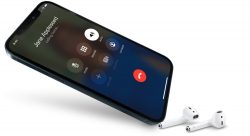 In the UK, Wi-Fi Calling and 4G Calling are now available on most mobile networks when you’re using a compatible device. The functionality allows you to make and receive phone calls and text messages wherever a Wi-Fi signal or a 4G mobile signal are available. This allows you to stay connected in more places, as well as giving you better quality phone calls and faster download speeds on a call.
In the UK, Wi-Fi Calling and 4G Calling are now available on most mobile networks when you’re using a compatible device. The functionality allows you to make and receive phone calls and text messages wherever a Wi-Fi signal or a 4G mobile signal are available. This allows you to stay connected in more places, as well as giving you better quality phone calls and faster download speeds on a call.
In this article, we’ll look at Wi-Fi Calling and 4G Calling capabilities in the UK. We’ll start by looking at what the technology is, and the mobile networks on which you’re able to use it. We’ll also look at handset compatibility and alternatives to the technology if you’re not able to get it.
Contents
What Is Wi-Fi Calling & 4G Calling?
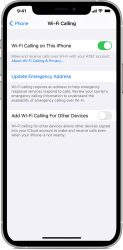 In the UK, Wi-Fi Calling and 4G Calling capabilities allow you to make and receive phone calls using a Wi-Fi or a 4G connection.
In the UK, Wi-Fi Calling and 4G Calling capabilities allow you to make and receive phone calls using a Wi-Fi or a 4G connection.
- Wi-Fi Calling (also known as VoWiFi) allows you to make and receive phone calls over a Wi-Fi network. The primary benefit is that it allows you to stay connected in places where a traditional mobile signal isn’t available (e.g. inside buildings with thick walls and in more rural locations where a mobile signal isn’t able to reach).
- 4G Calling (also known as VoLTE) allows you to make and receive phone calls over a 4G mobile network. The primary benefit is that your phone doesn’t need to drop down to an old 2G or 3G connection to make the call. This gives you a more reliable service and faster download speeds when you’re on the call. You can also benefit from better quality HD voice calls.
In both cases, the Wi-Fi Calling and 4G Calling functionality are provided by your mobile network. There are no special apps required to use it: you just need a compatible device and you can make phone calls as normal. It also uses your regular phone number, both for receiving inbound calls and for making outbound calls.
With Wi-Fi Calling, text messages (SMS) can also be delivered over Wi-Fi. This is handy for receiving one-time passcodes (OTPs) which are often required when shopping or banking online.
Upcoming 2G & 3G Switch-Off
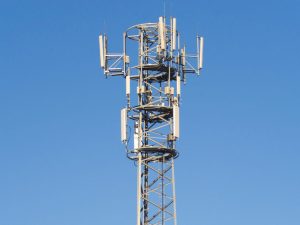 On mobile networks and mobile phones that do not support Wi-Fi Calling and 4G Calling, your device needs to fall back to older 2G and 3G networks whenever you make a phone call. This is known as CSFB (Circuit Switched Fall Back).
On mobile networks and mobile phones that do not support Wi-Fi Calling and 4G Calling, your device needs to fall back to older 2G and 3G networks whenever you make a phone call. This is known as CSFB (Circuit Switched Fall Back).
In 2023, the UK mobile networks will begin to switch off 3G coverage. This will be followed by the 2G network switch-off, which is due to be completed before 2033.
The upcoming 2G & 3G network switch-off makes Wi-Fi Calling and 4G Calling increasingly important features to have. Without them, your phone needs to fall back on older 2G and 3G networks whenever you make or receive a call. As this coverage becomes increasingly difficult to find, it’s possible that your phone calls will fail to connect.
Wi-Fi Calling & 4G Calling: By Network
To use Wi-Fi Calling and 4G Calling on your smartphone, you’ll need a mobile network and a device that supports the technology.
The following table shows a list of a UK mobile networks and whether they support Wi-Fi Calling and 4G Calling functionality. We’ve also shown the underlying coverage provider for each network:
| Mobile Network | Wi-Fi Calling & 4G Calling | Coverage Provider |
|---|---|---|
| 1pMobile | Yes, check device | EE |
| ASDA Mobile | Yes, check device | Vodafone |
| BT Mobile | Yes, check device | EE |
| EE | Yes, check device | EE |
| giffgaff | No | O2 |
| O2 | Yes, check device | O2 |
| iD Mobile | Yes, check device | Three |
| Lebara Mobile | Yes, check device | Vodafone |
| Lycamobile | No | EE |
| SMARTY | Yes, check device | Three |
| Sky Mobile | Yes, check device | O2 |
| Talk Home | No | EE |
| Talkmobile | Yes, check device | Vodafone |
| Tesco Mobile | No | O2 |
| Three | Yes, check device | Three |
| Virgin Mobile | Yes, check device | O2 |
| Vodafone | Yes, check device | Vodafone |
| VOXI | Yes, check device | Vodafone |
For both Wi-Fi Calling and 4G Calling, the list of compatible devices can vary slightly depending on your network. For this reason, it’s worth double checking your mobile network’s website to see if you’re able to use this on your device.
Whenever you make a phone call or send a text message through Wi-Fi Calling or 4G Calling, you’ll be charged for it as normal by your mobile network. If you have inclusive minutes on your plan, you’ll just be able to use them as normal. Meanwhile, Pay As You Go customers will continue to pay their normal per-minute and per-text rates.
In some cases, certain advanced mobile network features may not be compatible with Wi-Fi Calling and 4G Calling (e.g. call recording and conference call features). These mainly affects corporate mobile users. If this is the case, you’ll need to turn off those features before you’re able to use Wi-Fi Calling or 4G Calling.
Alternatives
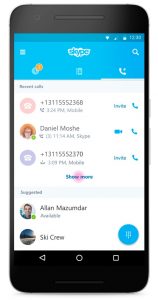 If you’re not currently able to use Wi-Fi Calling or 4G Calling, it’ll still be possible to make phone calls using Skype, WhatsApp or other voice-over-IP apps. In this case, you won’t be able to use your normal phone number and you might only be able to call other people who are using the same app. However, this can sometimes be cheaper (e.g. if you’re travelling abroad or making international calls).
If you’re not currently able to use Wi-Fi Calling or 4G Calling, it’ll still be possible to make phone calls using Skype, WhatsApp or other voice-over-IP apps. In this case, you won’t be able to use your normal phone number and you might only be able to call other people who are using the same app. However, this can sometimes be cheaper (e.g. if you’re travelling abroad or making international calls).
If you’d like to receive phone calls and text messages on your normal mobile number, you’ll need to use the Wi-Fi Calling and 4G Calling capabilities provided by your mobile network.
More Information
For more information about Wi-Fi Calling and 4G Calling, please refer to your mobile network’s website. You can also see our in-depth guide to mobile coverage in the UK, along with our guide to networks that use EE coverage, O2 coverage, Three coverage and Vodafone coverage.
For more information about how to set up the feature on your device, see the instructions for using Wi-Fi Calling on an iPhone, Samsung Galaxy or other Android devices.
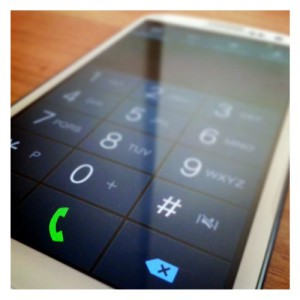





Jason said:
As of early 2024, O2 still do not support 4g calling/volte nor wifi calling for pay as you go. https://www.o2.co.uk/help/network-coverage-and-international/wifi-and-4g-calling Thankfully they will not be shutting off their 3G network until at least 2025, for those of us whose devices can’t speak 2g.
Jim Dixon said:
Think you are missing the most important aspect of wifi calling, we are visiting the UK from Australia, one of our mobiles still has a local Australian sim card [Boost] installed but they do not offer global roaming, however they do offer wifi calling and the mobile is compatible with wifi calling so we are able to make and receive free calls to Australia saving us a fortune on global roaming costs.
William Hodgson said:
My wife is on Lebara and has just had an e-mail telling her that they are now rolling out wifi calling and that she is one of the first. Unfortunately her phone does not provide this option.